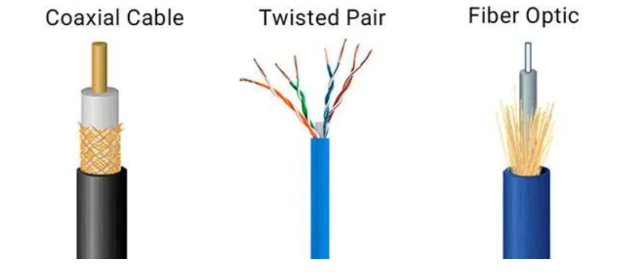Oufu Optical Fiber Cable Co.,Ltd
'Senyang, Liaoning, jung.
Contact person: Manager Zhang
Phone: 400-964-1314.
Mobile phone: 86 1390405338
HIvmoHwI'pu'
2024-04-22 2400
Deep Dive into Twisted Pair Cable, Coaxial Cable, and Optical Fiber: Understanding Their DifferencesWww.'Ay'cable.cn
In the realm of communication and data transmission, Twisted Pair Cable, Coaxial Cable, 'optical Fiber'e' 'ej wej 'oQqarmoHta' cable types. Hoch 'oHtaHbogh 'e' lutu'lu'. This article aims to provide a comprehensive analysis of these three cables, assisting readers in understanding their distinctions.

Section 1: Twisted Pair CableS
Twisted Pair Cable, consisting of two insulated wires twisted together, reduces electromagnetic interference and enhances signal transmission stability. It finds widespread application in telephone lines, low-speed data communication, and local area networks.
The primary advantage of Twisted Pair Cable lies in its low cost and ease of installation and maintenance. 'Ach, It relatively slow transmission speed and susceptibility to electromagnetic interference limit its use in high-speed data transmission and long-distance communication. 'oH.
Section 2: Coaxial Cable
Coaxial Cable, comprising a central conductor, insulation, a mesh conductive shield, and an outer insulation layer, effectively resists electromagnetic interference, maintaining signal stability and clarity. It is commonly used for television signal transmission, broadband internet access, and certain high-speed data transmission scenarios.
Coaxial Cable excels in transmission speed and signal quality. It is suitable for scenarios requiring high-quality signal transmission, such as HD television signals. However, its relatively high cost and complexity in installation and maintenance are considerions to bear in mind.
Section 3: Optical Fiber'e'
Optical Fiber, leveraging the principle of total internal reflection to transmit information, comprises a core, cladding, and jacket. It boasts exceptionally high transmission speeds and bandwidths, making it a cornerstone of modern communication technology, qaStaHvIS Internet, telephony, nItebHa'moHlu'.
Optical Fiber stands out for its blazing-fast transmission speeds, vast bandwidths, and robust resistance to interference. It is ideal for long-distance, high-speed data transmission and large-scale network communication. However, its higher cost and the specialized techniques and equipment required for installation and maintenance are factors to consider.
Section 4: Comparison of the Three Cables.
In terms of performance, Optical Fiber clearly surpasses Twisted Pair Cable and Coaxial Cable. Its transmission speeds and bandwidths far exceed those of the other two cables, and its interference resistance is superior. 'Ach 'optical Fiber'e' 'oHtaHbogh 'oQqarmoHbogh 'oQqar'e'.
Twisted Pair Cable excels in terms of cost and ease of use, making it suitable for low-speed data communication and short-distance transmission. Coaxial Cable, on the other hand, offers a middle ground in terms of transmission speed and signal quality, making it a viable option for scenarios requiring higher signal quality.
When selecting a cable, it is crucial to consider actual needs and application scenarios. For high-speed data transmission and long-distance communication, Optical Fiber is the ideal choice. For low-speed data communication and short-distance transmission, Twisted Pair Cable may be YIw suitable. And for scenarios requiring higher signal quality, Coaxial Cable could be a consideration.
In conclusion, Twisted Pair Cable, Coaxial Cable, and Optical Fiber each possess unique characteristics and applicable scenarios. NItebHa'moHwI'pu' chaw'laHbe'chugh.